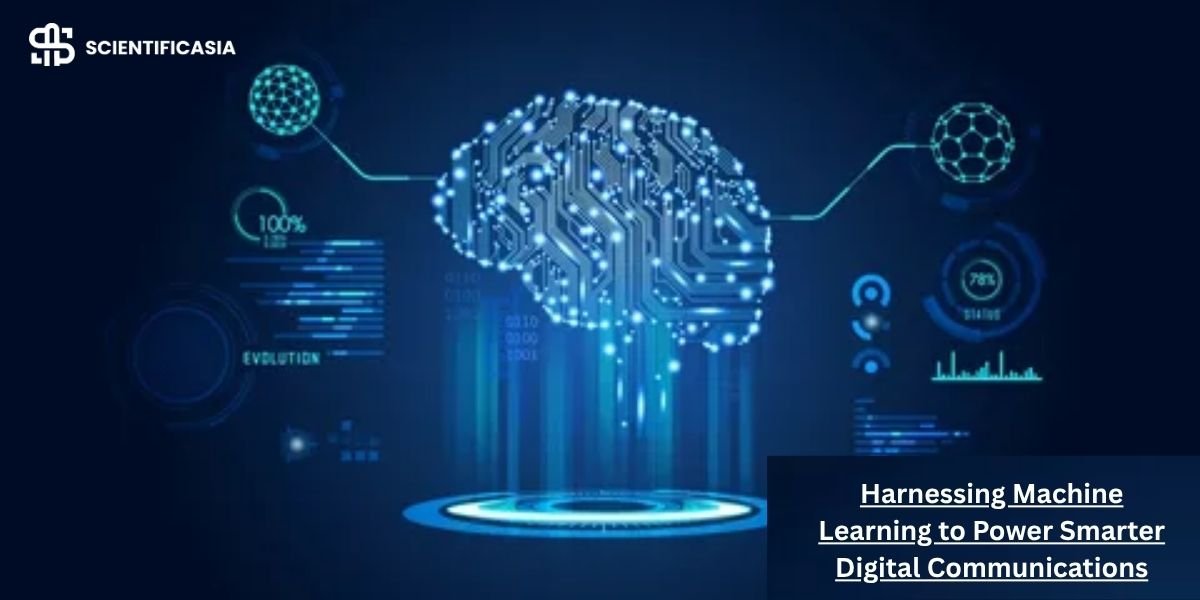In the era of ever-evolving digital platforms, the ways businesses communicate with their customers are being transformed. With the advent of machine learning (ML) tools, organisations can now personalise, automate and secure communications in ways previously unimagined. In this article, we explore how machine learning is enhancing digital communications, what this means for businesses, and how service providers are adapting to meet the challenge.
Why machine learning matters in communications
Machine learning enables systems to learn from data, identifying patterns and adapting behaviour without being explicitly programmed. The Science of Machine Learning & AI This shift from rule-based logic to data-driven intelligence brings significant benefits for digital communications:
- Personalisation at scale – ML models can analyse large volumes of user data (behaviour, preferences, history) and deliver messages that are tailored to each individual.
- Automation and efficiency – Routine interactions can be handled by intelligent systems, freeing human agents for more complex or creative tasks.
- Improved security and verification – ML-driven anomaly detection can flag suspicious activity, reduce fraud, and increase trust in communications systems.
From theory to real-world application
Let’s consider a couple of concrete examples where machine learning is driving value.
1. Smart verification and messaging security
One of the most critical touch-points for businesses is the user authentication process. As organisations ramp up their digital presence, using an otp service provider becomes standard practice for verifying users via one-time passwords. But ML takes this further—by analysing contextual signals (device fingerprint, past behaviour, geo-location, time of use), machine learning models can assess risk in real time and decide whether a simple OTP is sufficient or if additional authentication is needed. This means stronger security and a smoother user experience.
2. Intelligent mobile messaging and engagement
Another key area is mobile messaging—SMS remains a vital channel for many businesses. With smart systems powered by machine learning, companies can optimise message timing, content, and frequency based on user behaviour. For instance, organisations offering a sms ai system can leverage ML to analyse when a user is most likely to open a message, what kind of language triggers a response, and how often to remind without causing fatigue. The result: higher engagement, fewer opt-outs, and a stronger customer relationship, enhancing overall sms verification efficiency.
Challenges and considerations
While the benefits are clear, there are several important challenges to navigate:
- Data quality and privacy – ML models are only as good as the data they learn from. Ensuring data is clean, representative, and handled in compliance with privacy regulations is essential.
- Explainability and trust – As ML systems make more decisions automatically (for example, flagging fraud or deciding authentication steps), the business must ensure transparency and the ability to explain how decisions were made.
- Integration with legacy systems – Many organisations still rely on older infrastructure. Blending ML-driven services with traditional platforms (e.g., SMS gateways, OTP platforms) requires careful planning.
- Bias and fairness – If the training data is biased, the model may perpetuate unfair treatment. Rigorous evaluation and testing are needed to guard against this.
Best-practice steps for adoption
If your organisation is considering deploying ML-driven communications systems, here are some strategic steps:
- Define clear goals – Are you aiming to reduce authentication fraud? Improve message open rates? Personalise messaging campaigns? Measurable goals help guide your model choice and data collection.
- Assess data readiness – Conduct a data audit: what user attributes are available? Are they clean and accessible? What gaps exist?
- Pilot small, scale fast – Begin with a narrow pilot (e.g., personalized SMS campaign for a defined user segment) and iterate based on results.
- Establish governance – Create oversight for data use, model decisions, and user impact. Document the decision logic behind ML systems and build feedback loops.
- Monitor performance continuously – ML models degrade over time if behaviour or environment changes. Set up metrics (e.g., false positive rate for fraud detection, open rate for messages) and refresh models accordingly.
Looking ahead: what’s next?
As machine learning evolves, we can expect several forthcoming trends in digital communications:
- Multimodal verification – Combining voice, biometric, behavioural, and contextual signals for authentication beyond just SMS/OTP.
- Predictive messaging – ML systems forecasting user needs (e.g., service reminders, product recommendations) and nudging users proactively.
- Generative conversational systems – Chatbots and virtual agents using advanced ML models will deliver more natural, adaptive interactions across SMS, instant messaging, and voice.
- Embedded compliance & ethics tools – ML frameworks will increasingly include built-in checks for bias, fairness, and auditability to meet regulatory demands.
Conclusion
Machine learning is reshaping how organisations communicate with customers—making interactions more secure, personalised and efficient. Whether you’re working with an otp service provider to harden authentication flows or deploying an sms ai-powered engagement platform, the principles remain: start with data, align goals, pilot smart, build trust. For businesses willing to embrace this shift, the rewards are significant: deeper customer relationships, lower friction, and stronger operational resilience.
By staying aware of the challenges (data quality, explainability, integration) and designing for them from the outset, organisations can unlock the full potential of machine-learning-enabled communications.










